Understanding the healthcare needs of residents of senior housing communities and nursing homes is imperative to best serve the population. In order to garner a better understanding of these healthcare needs and associated spending, NORC at the University of Chicago on behalf of NIC conducted a landmark study. Many residents use high-cost healthcare services including emergency rooms, acute inpatient hospitalization, and post-acute care, and across nearly every dimension analyzed, the data indicates frail and high healthcare cost residents. These factors all highlight an opportunity for value-based care organizations to partner with senior housing and skilled nursing operators.
The study cohort of Medicare fee-for-service beneficiaries includes more than 250,000 senior housing residents and more than 325,000 nursing home residents. The study’s findings indicate that residents of senior housing and nursing homes average over a dozen chronic conditions and that behavioral health conditions are common.
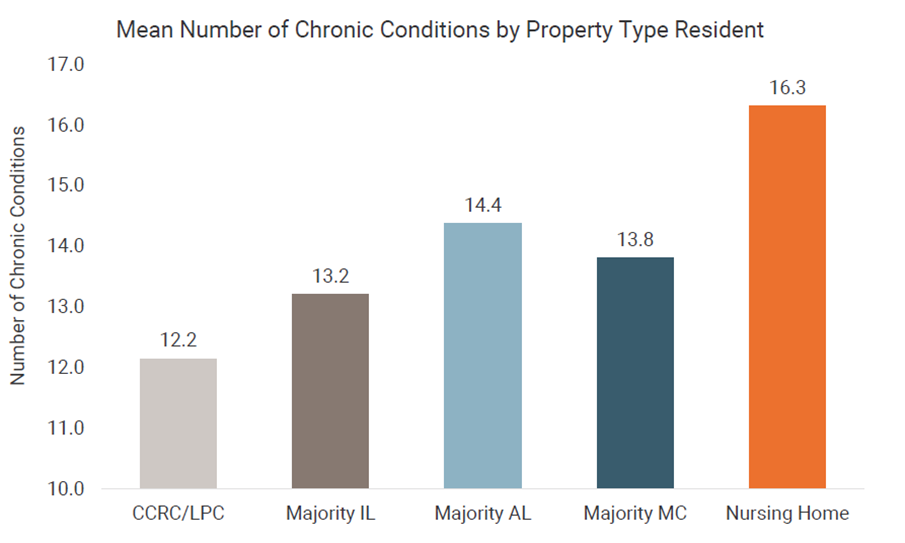
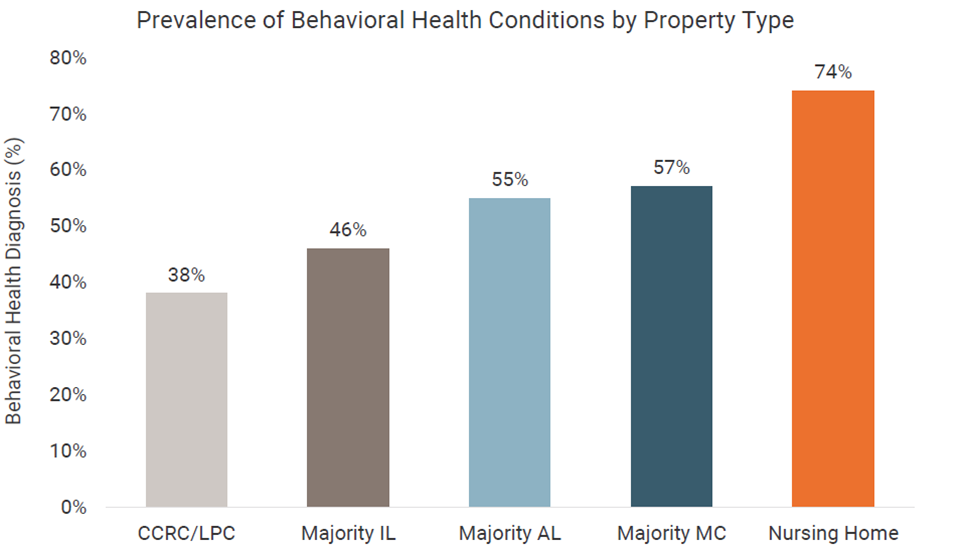
Senior housing residents have annual healthcare spending between ~$20,000 and $30,000, with between $3,000 and $4,000 out-of-pocket resident spending. Inpatient hospital and other institutional spending account for between 62% and 76% of a resident’s healthcare spend. By comparison, the average U.S. Medicare beneficiary incurs about $16,000 in annual healthcare costs. As such, reducing avoidable high-cost services is often a key focus of Medicare Advantage (MA) plans and other risk-bearing organizations.
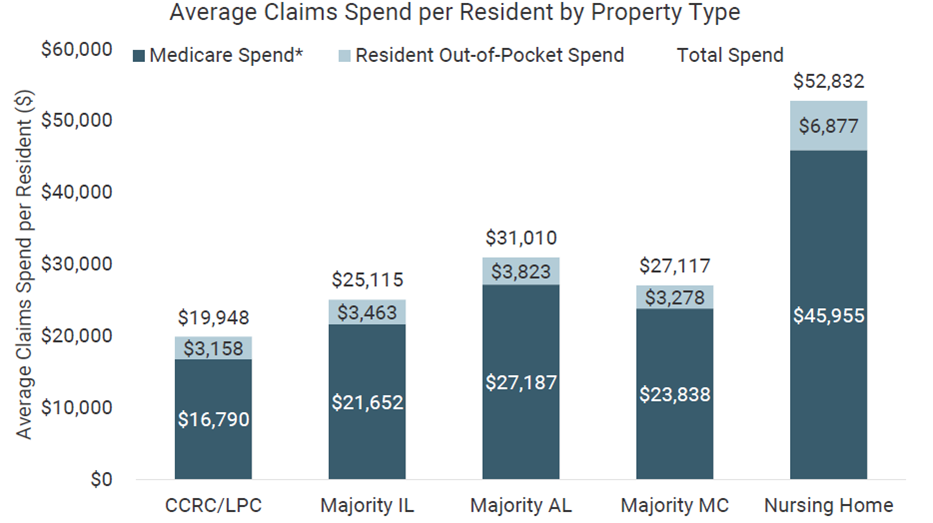
Spending on inpatient hospital care, including long-term care and rehabilitation, also suggests an opportunity for operators to build programs aimed at reducing hospitalizations.
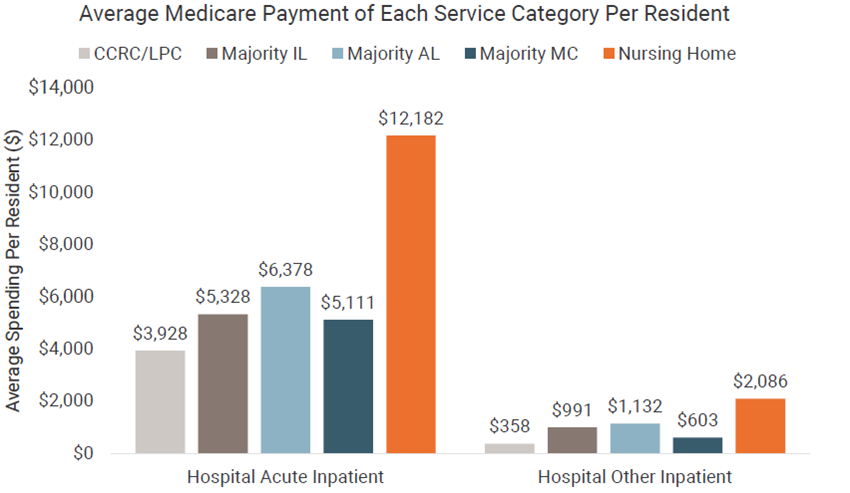
Additionally, senior housing residents have considerable hospice and home health spending. Home health services are predominantly for restorative therapy but may also involve skilled nursing and medication management. Medicare spending for both physician-administered and self-administered drugs also presents an opportunity to focus on medication therapy management and polypharmacy.
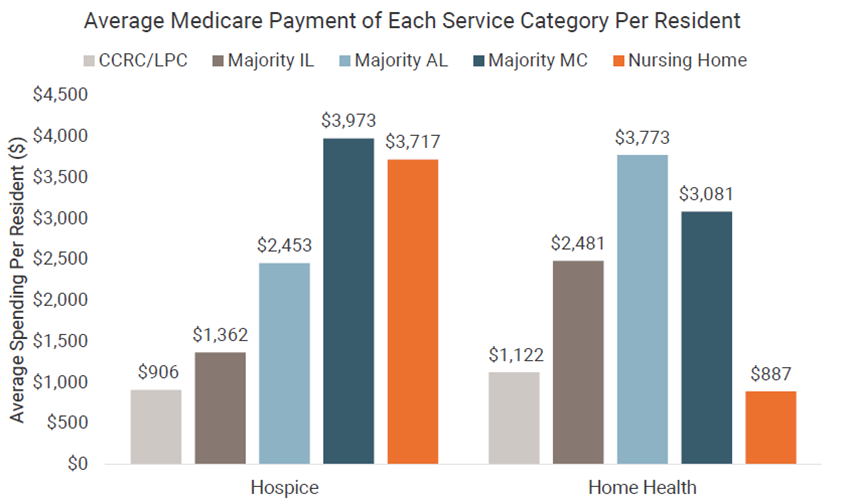
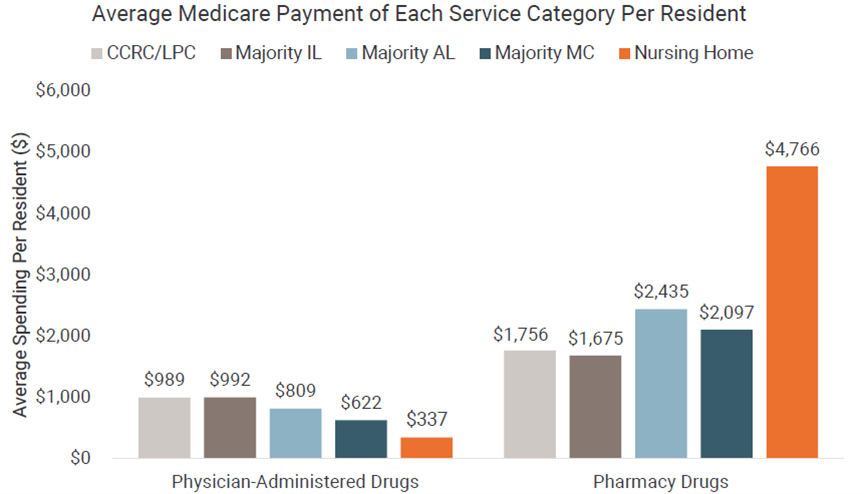
The methodology for the study utilizes an academically-designed data linkage approach which links property information from the NIC MAP® Data Service, powered by NIC MAP Vision, with Medicare Current Beneficiary Survey (MCBS) data and comprehensive administrative and claims data. With few data sources available to analyze the health needs of senior housing residents, this nationally representative survey allows senior housing and care stakeholders to better understand the health conditions that are most prevalent among their residents. With this understanding, proactive healthcare delivery strategies can be designed for the residents of senior housing communities and nursing homes.
To view the complete slide deck of findings, including methodology, inclusion criteria, age distribution, and service usage, download the slides below
{{cta(’03c527e5-e6a9-4f21-b08b-d762129e6147′)}}